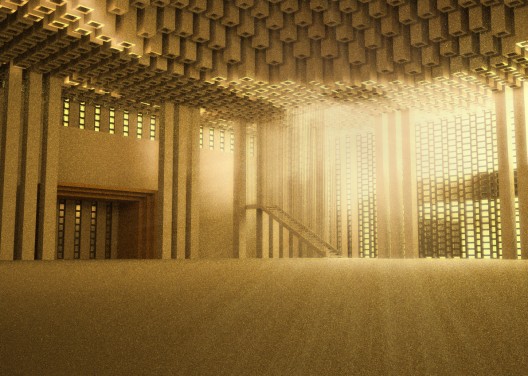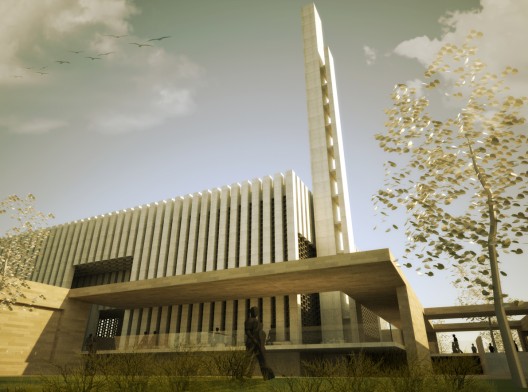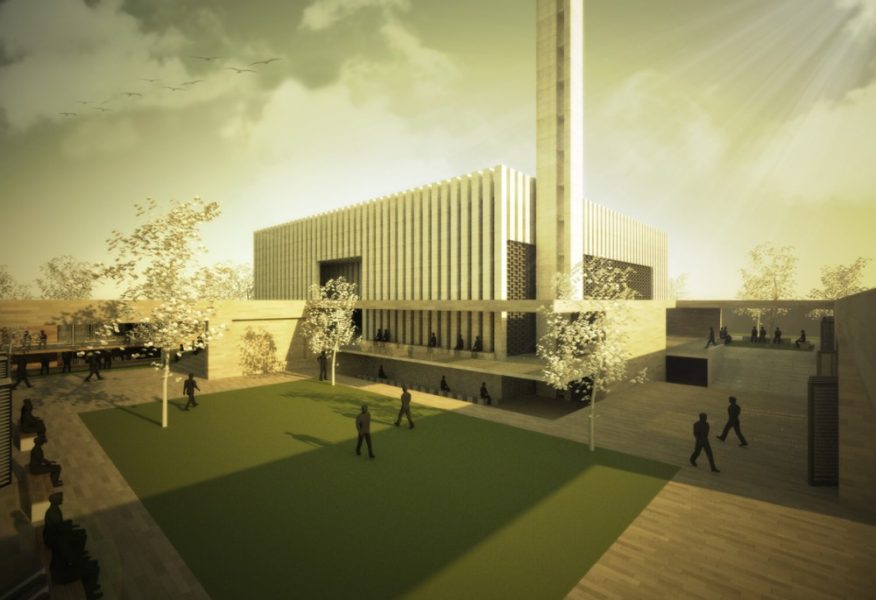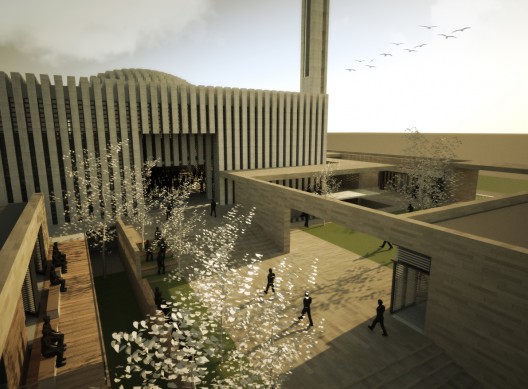The Building: Problem or Solution? A competition, managed by Faith in Place, encouraged the creative design of religious buildings through the re-use and modification of existing structures. Through the collaborative ideas of architects Onat Oktem, Ziya Imren, Zeynep Oktem and Uri Tzarmotzky, their Green Mosque won the competition’s, “Best Freestanding Religious Structure” destinated to Wisconsin (USA).
The mosque, a place for many activities

Since the Ottoman tradition the mosques incorporate many different functions besides being only a place for prayer. The project team thus decided to design not only a mosque but a religious complex for various social activities and mutual aid.
The mosque complex, composed of the main mosque building, a library, education and lecture halls, accompanied with a “soup kitchen”, strengthens the idea of getting together and socializing as a community, with social and cultural activities. Similarly the structure of the dome represents the gathering function of the mosque with its structural units coming together to compose the dome shape. The complex not only acts as a continuous interaction space but also respects its user’s privacy. The ablution space and the prayer area are separated from the rest of the complex by different levels of entrance. The level difference also enables the gradual transition from public to semi-public and finally to private spaces of the complex.
Since the Ottoman tradition the mosques incorporate many different functions besides being only a place for prayer.
The double-hull system in the mosque creates a thermal buffer zone between the main mass and outside. This system which also helps to keep the calm environment in the prayer area, facilitates internal heating in winter and also protects the interior zone from rain, snow and wind. In summer the thermal buffer zone creates a cooler zone for the main mass. Additionally the vertical glass surfaces create a spiritual atmosphere for the prayer area.
The role of water

As the mosque is situated in a humid continental climate it is appropriate to benefit from the rain water and solar properties of the area for a more sustainable usage. Solar thermal cells disposed on the units composing the dome of the mosque, serve as an additional medium for water heating. Green roofs of the library, soup kitchen and lecture rooms contribute to the insulation of the building, and to the improved air quality, helping to lower urban air temperatures and combat the heat island effect.
A mosque necessitates more water than any other religious building because of the ablution ritual before the prayer. In order to reduce the water consumption the project embodies several energy efficient strategies. The rain water and waste water from ablution is collected so that the purified water can be re-used for watering the vegetable garden with a high-efficiency drip irrigation system. For the vegetable garden which aims to support the community, corn, onions and potatoes were selected since they are easy to cultivate in this climate and in this geography and also they require less water to grow. The products from the garden can be used to prepare meals for those who are in need, in the community and can be dispatched in the “soup kitchen” which is integrated to the mosque complex.
Another feature that the mosque incorporates to reduce water consumption is low-flow toilets. Again waterless urinals, low-flow faucets and water-efficient plumbing fixtures all contribute to water savings. The water collected from the rain water and ablution water is also used for the toilet flushes.
As for the materials chosen for construction, the project team suggests using materials with recycled content. According to the Wisconsin DNR “approximately 28% of waste, entering the municipal solid waste stream is construction and demolition waste much of which is recyclable or reusable”.
Together with the reused materials, the project team considers the importance of using paints, adhesives, and sealants that feature low chemical emissions for the sake of the environment. The use of local materials for the construction and the interior design minimizes the energy spent for transportation thus contributes to the sustainability goal of the project while also favoring the development of the local industry.
Source: Faith in Place
This post is available in: English


